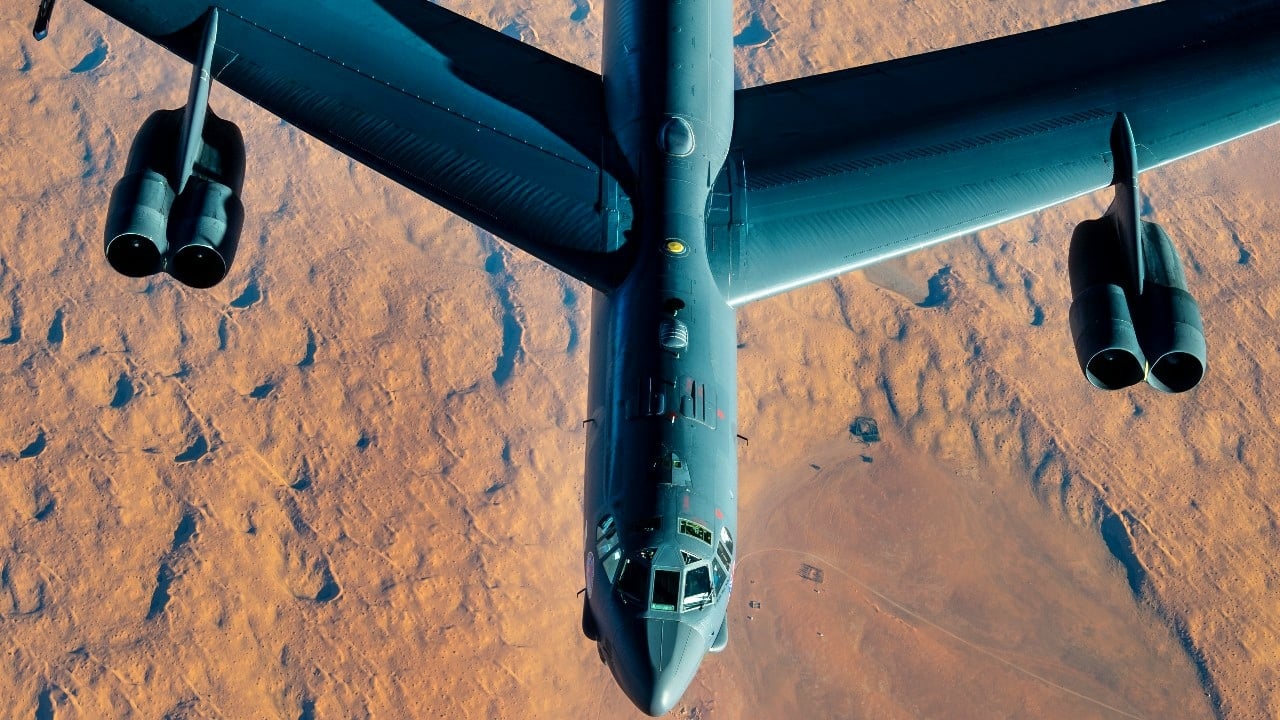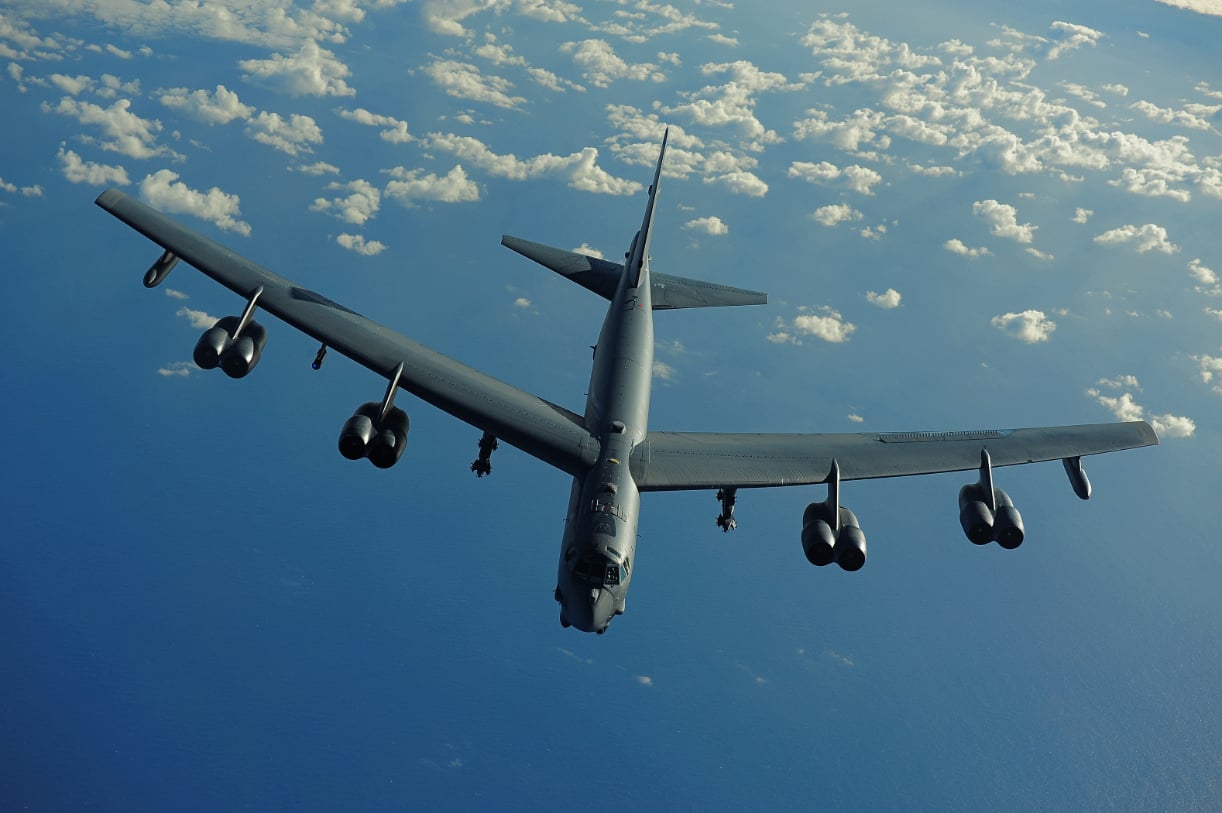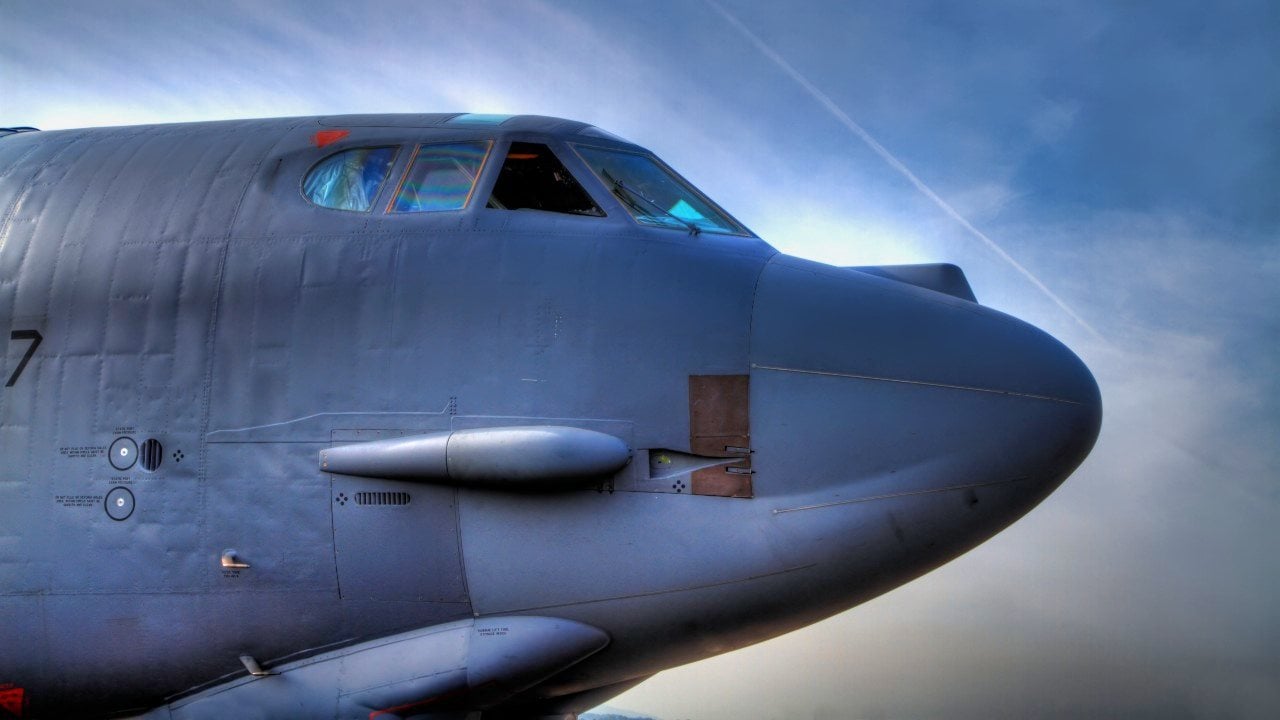B-52J: The Air Force's 'Flying Aircraft Carrier' Bomber Powerhouse
The B-52J Stratofortress, an upgraded version of the iconic B-52, represents a major modernization for the aging bomber. Key upgrades include new Rolls-Royce F130 engines, a new radar system from the F/A-18EF, and a sleeker design, enhancing its range, stealth profile, and fuel efficiency.
What You Need to Know: The B-52J Stratofortress, an upgraded version of the iconic B-52, represents a major modernization for the aging bomber. Key upgrades include new Rolls-Royce F130 engines, a new radar system from the F/A-18EF, and a sleeker design, enhancing its range, stealth profile, and fuel efficiency.

-This modernization, however, has faced cost overruns and delays, raising questions about its value.
-Despite this, the B-52J’s versatility—capable of deploying precision munitions and potentially operating as a “mothership” for or 'flying aircraft carrier' for drone swarms—arguably makes it a better investment for U.S. competitiveness than certain high-cost, next-gen projects, extending its legacy as a mainstay of American air power.
The B-52J: America’s Century-Old Bomber Gets a Futuristic Makeover
The B-52J is the latest iteration of the iconic B-52 Stratofortress, a long-range strategic bomber that has been a cornerstone of the United States Air Force (USAF) since its introduction in the 1950s. Yes, you read that right. The same Air Force that is desperate to retire the F-22A Raptor after only 20 years of using what most consider to be the world’s most advanced warplane has also operated a long-range bomber since Harry Truman was president.
Despite the fact that there have been a total of eight variants of this legendary bomber, the aircraft has basically remained the same in that time. Until now. The “J” represents a major modernization program (that’s why the Air Force opted to skip “I” and go to J, because it is two generations removed from the B-52H). In fact, the immediate predecessor to the newest incarnation of the Stratofortress, which is known as the B-52H, was first deployed in the 1960s.
That means that the B-52 has not had a major overhaul in its design since the Vietnam War!

All these modifications will ensure that the B-52 remains flying until 2050. In other words, a whole century after it was first deployed. I’d hate to harp on a point made earlier, but it boggles the mind that the Air Force is completely sanguine with keeping a bomber flying that was designed at a time before human beings had satellites in orbit and televisions were run off vacuum tubes and they are completely gung-ho to retire air-superiority stealth warplanes that are barely 20 years old.
The mind reels at this, actually.
What Makes the B-52 “J” Different
Anyway, the B-52J is expected to have several key capabilities that differentiate it from its predecessors. It will ultimately cost $48.6 billion for the overhaul, by the way. One of the most significant upgrades is the replacement of the bomber’s original Pratt & Whitney TF33 engines with the new Rolls-Royce F130 engines.
This change will increase fuel efficiency and range while curbing emissions as well as significantly reducing maintenance costs. The new engines will also be quieter and produce minimal smoke, giving the B-52J a stealthier profile.
That last bit is key to this. As it stands, the Air Force has made a concerted effort for decades to transition its forces to stealth. This makes sense, given the kind of countermeasures that American enemies are developing. Yet, for the duration of the Air Force’s stealth craze, they relied upon an old bomber that was anything but stealthy.

In addition to the new engines, the B-52J will receive a new radar system, a modified variant of the F/A-18EF Super Hornet’s APG-79 AESA radar. This new radar will provide the bomber with greatly improved radar range and situational awareness, while also taking up less space than the older mechanically scanned radar. The B-52J will have a cleaner look, with the removal of blisters that currently house the AN/ASQ-151 Electro-Optical Viewing System (EVS).
The B-52J is expected to be a versatile platform, capable of carrying a wide range of weapons, from gravity bombs to cruise missiles and hypersonic weapons. This flexibility will allow the bomber to engage the enemy with “affordable mass,” precision-guided munitions, and highly specialized, “exquisite” weapons as needed.
The USAF plans to have a fleet of 76 B-52Js, which will be the result of the modernization of the current fleet of 76 B-52Hs. The new Stratofortress is expected to be available for operational use by the end of the decade, with the initial operations capability (IOC) expected in 2033.
Complications to the Air Force’s Best-Laid Plans
Of course, it wouldn’t be a new weapons system designed by the Pentagon without complications. The program has experienced delays due to issues with both the new engines and the new radar system.
Funding shortfalls have hampered the timely completion of design for the B-52 Commercial Engine Replacement Program, and the B-52 Radar Modernization Program has also seen costs explode to cover the variety of technical issues that have cropped up during the course of the modernization drive.
Rarely has the question been asked if the B-52J is the best expenditure?

Is the B-52J Worth It?
With so many systems moving to drones and with the advent of highly complex air defense systems protecting possible targets of these bombers, what is the point of these systems? These are valid questions and concerns. Ultimately, though, B-52s have long served multiple roles. From bombing distant targets to launching hypersonic weapons to being used as testbeds for new platforms.
These new B-52s could be helpful in keeping the US competitive with its foes.
For example, they could go from being strategic long-range bombers to become motherships for swarms of drones.
Sort of like flying aircraft carriers.
Therefore, despite the cost overruns and complications, the B-52J is still a worthier investment than in the Air Force’s ridiculous Next-Generation Air Dominance (NGAD) platform.
Author Experience and Expertise: Brandon J. Weichert
Brandon J. Weichert, a National Interest national security analyst, is a former Congressional staffer and geopolitical analyst who is a contributor at The Washington Times, the Asia Times, and The-Pipeline. He is the author of Winning Space: How America Remains a Superpower, Biohacked: China’s Race to Control Life, and The Shadow War: Iran’s Quest for Supremacy. His next book, A Disaster of Our Own Making: How the West Lost Ukraine, is due October 22 from Encounter Books. Weichert can be followed via Twitter @WeTheBrandon.
All images are Creative Commons or Shutterstock.
From the Vault
Russia Freaked Out: Why the U.S. Navy 'Unretired' the Iowa-Class Battleships
Battleship vs. Battlecruiser: Iowa-Class vs. Russia's Kirov-Class (Who Wins?)


